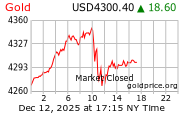We left off with a discussion of a useful correction guideline that indicates where C waves tend to end in the middle of strong impulsive market moves.

I have already discussed the smaller degree, or short term implication, of the guideline, which is the prediction of an impending reversal of corrective trend and a return back to the impulsive trend of price movement. So, what about the larger degree implications?
Since EWs are fractals that are self-similar at all degrees, one has to note where we are in the big picture to better understand where the market is headed. Exactly where we are, of course, is up for debate. Many EWers, myself included, believe that Y2000 was the top (the center line of the diagram, above) of a multi-century impulse wave.
Interestingly, the large degree impulse waves shown above, 1, 3, and 5, roughly align to the three waves of technological progress as manifest in American markets noted by people like Alvin Tofler and Newt Gingrich, who empirically determined a similar truth to the one R.N.Elliott resolved analytically. They are: an agrarian push to Wave 1, an industrial push into Wave 3, and an informational push up to Wave 5. Perhaps unfortunately, one key difference between RNE and Tofler is that EW theorists are most certainly not looking for a fourth wave of advance, but rather Wave A of similar proportion.
Expounding on the three waves that have unfolded over America's brief history:
Wave 1 likely peaked in the late 1830s, with the massive depression caused when Andrew Jackson killed the sale of government-sponsored inflation for well connected corporate profiteers and associated politicians. In other words, the first defeat of the use of a U.S. government-condoned central bank, to massively tax and profit from the work of the American people, was the end of the first wave of intentional mega-inflation in American markets.
Wave 3, which intrigued R.N. Elliott enough to identify the occurrence of EWs in nature, likely peaked in 1929. Industrialization laid the foundation for an incredible surge in general prosperity. Like all Wave 3s, the fundamentals are extremely solid even if the price moves are not. This wave characterizes the age of American factories, railroads, road systems and runways, from the mid 1800s into the great inflation at the end of the "Roaring '20s."
Wave 5 was the final, information age enabled, inflationary push into the Y2K peak. Like all Wave 5s, this was characterized by heavy public participation in not as sound market fundamentals. In extended wave 5s like these, prices move much faster than fundamentals. Wave 3 industrialized the nation and produced a 400 point Dow gain; Wave 5 layered a lot of paper and elections on top of that and added a whopping 14,000 points to the Dow. Wave 5s, in general, are characterized by people throwing their money at manias without understanding where their money is going, or why.
Examining the 1932-2000 Wave 5 more closely, we have the small degree Wave 1 of 5 peaked in 1939. This was the first push of a large scale, Wave 5 mania, it was induced by FDR's rampant government spending, which certainly fits the profile. Wave 3 of Wave 5 was the refined industrialization of America; the rise of modern industrialized giants like GM, BA and GE. Wave 3 peaks in the mid 60's, and still only takes the Dow to about 1,000 even though Wave 5 fundamentals are never stronger than at the Wave 3 of 5 peak. Wave 5 of 5 takes us from the early 1970s into the 2000 surge. It is characterized by raging, unprecedented, though mostly clueless, public participation in the stock market via the appearance of mutual funds, and is heavily IT enabled in keeping with the personality of a true information age Wave 5 push.
After the 2000 peak, the first signs of our multi-century decline manifest via the age of hedge funds. Hedge funds are also large scale pooled funds designed to steal the wealth of slower, dumber public money. The initial decline, from about 2000 to 2003, cuts the Dow in half. But is that where the fall ends?
Let's examine further.
Remember our guideline from The Correction Zone, that the decline following a full scale Wave 5 peak should take us to somewhere between the previous Wave 4 of similar degree and Wave 2 of 5 of one lesser degree. Where would that put the Dow? Initially, to the 1,000 mark of the mid 1960's, and then, ultimately, to the the larger degree Wave 4 target of less than 400, formed in the early 1930s.
These are stunning expectations, but such is the grandiose, yet frighteningly reliable nature of EW analysis.
If these financial targets aren't captivating enough on their own, consider "the engine" by which EWs may unfold. Bob Prechter of elliottwave.com likes to point out that EWs, in their most primitive form, are none other than predictably programmed, social mood swings. The changes in public emotion are casual to, and thus precede any realization in financial markets. Bob calls his theory socionomics.
It is hard not to notice some "modern day" headline trends that tend to support both our EW market correction guidelines, as well as the "socionomics" that might help drive the market to them:
Clearly we have widespread yearning for the solid American fundamentals of the 1960's...
[CLICK PHOTOS TO ENLARGE]

...as well as fashion trends reaching back to the 1930's and 40's for a more conservative source of inspiration.

Both trends are exactly the Elliott-predicted, natural public mood swings we'd expect as people mentally, then financially, adjust to the long term, fractal "Correction Zones," discussed above.






FDR
ReplyDeleteKing World News Broadcast did a interview with Bob Prechter a couple weeks ago. Most visitors on this site will like it and KWNB
Russ Wraith